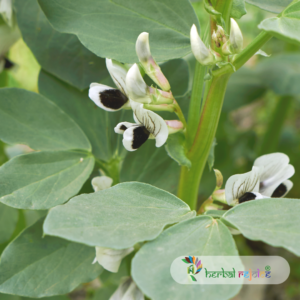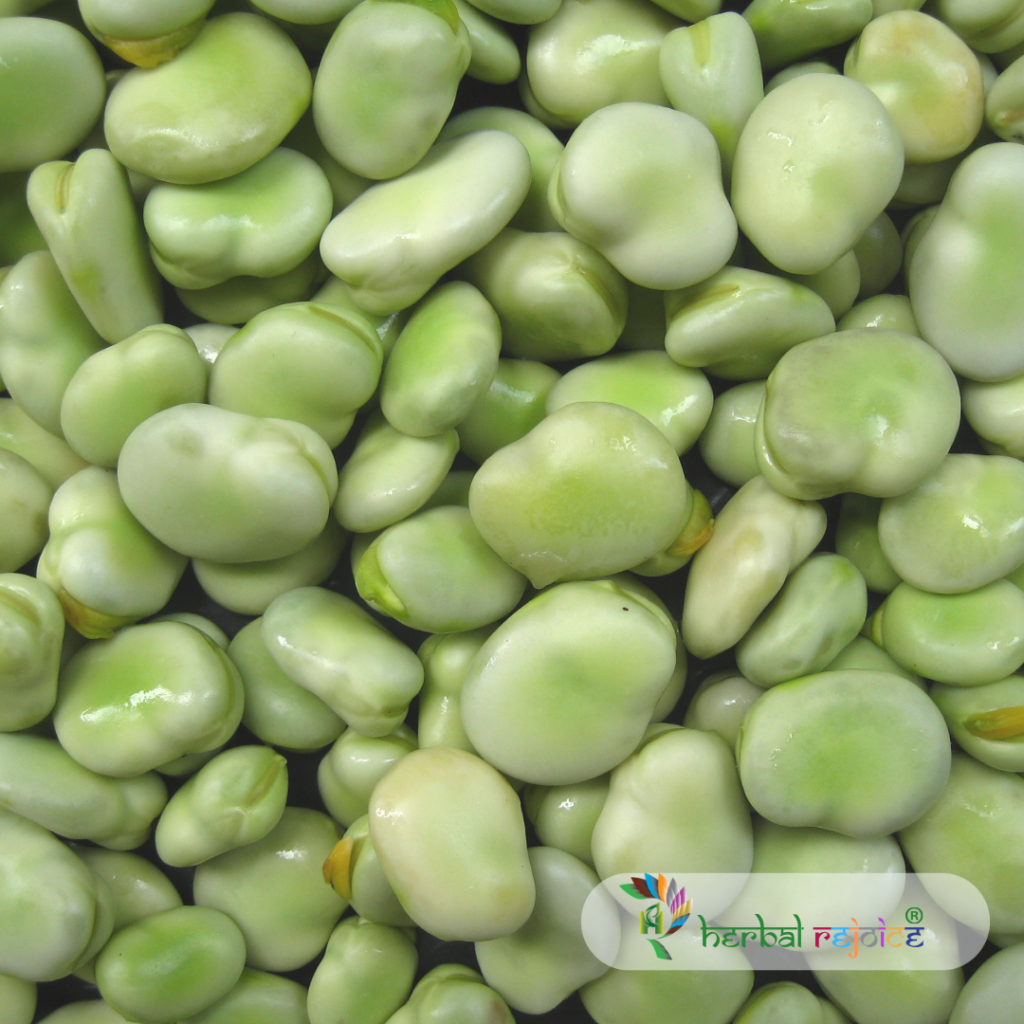Introduction
Vicia faba Linn., also known as Broad bean or Windsor bean, is a plant native to North Africa but commonly grown in Northwestern India. In Unani medicine, fresh beans are often prescribed for cough and resolving inflammations. They can be cooked alone or with meat for this purpose. Additionally, the bean and flowers can be used externally as a poultice for inflammations, warts, and burns.
Components of Vicia faba
It is important to note that broad beans contain harmful principles that should be taken into consideration. These include a large amount of Dopa, which is mainly found in its free state and partly in the form of its beta-glucoside. Glucoalkaloids, such as vicine and convicine, have also been isolated from the beans. Due to these harmful substances, it is not recommended to consume fresh, uncooked, or partially cooked beans.
Furthermore, the seeds of Vicia faba have been found to contain hydrocyanic acid and arsenic. On the other hand, the fresh beans have been found to exhibit estrogenic activity. The immature seeds of the plant also produce phytoalexins that have antifungal properties.

Health Benefits
In terms of organic acids, malic, citric, and glyceric acids are the principal ones present in the pods of Vicia faba. These acids are also present in the hulls of the plant. Glyceric acid, when injected subcutaneously, has been shown to cause a marked diuresis in rabbits. Similarly, a decoction of the leaves and stems of another bean species, Faba vulgaris Moench, also known as field bean, is used as a diuretic.
Additionally, an aqueous extract of the root nodules of Vicia faba has exhibited vasoconstricting activity on rabbits.
Conclusion
In conclusion, Vicia faba, commonly known as Broad bean or Windsor bean, has various medicinal uses in Unani medicine. However, it is important to be cautious when consuming this plant, as it contains harmful substances such as Dopa, glucoalkaloids, hydrocyanic acid, and arsenic. On the other hand, the plant also has beneficial properties, including estrogenic activity and the production of antifungal phytoalexins. The presence of organic acids in the pods and the diuretic effects of glyceric acid are also noteworthy.
Frequently Asked Questions
What is Vicia faba Linn. commonly known as?
Vicia faba Linn. is commonly known as Broad bean or Windsor bean.
Where is Vicia faba native to?
Vicia faba is native to North Africa.
Where is Vicia faba commonly grown?
Vicia faba is commonly grown in Northwestern India.
What are the medicinal uses of Vicia faba in Unani medicine?
In Unani medicine, Vicia faba is often prescribed for cough and resolving inflammations.
How can Vicia faba be consumed for medicinal purposes?
Vicia faba can be cooked alone or with meat for medicinal purposes.
What parts of Vicia faba can be used externally?
The bean and flowers of Vicia faba can be used externally as a poultice for inflammations, warts, and burns.
Are there any harmful substances in Vicia faba?
Yes, Vicia faba contains harmful substances such as Dopa, glucoalkaloids, hydrocyanic acid, and arsenic.
Can fresh beans from Vicia faba be consumed?
It is not recommended to consume fresh, uncooked, or partially cooked beans from Vicia faba due to the harmful substances they contain.
What is the main harmful substance in Vicia faba?
The main harmful substance in Vicia faba is Dopa.
What harmful substances have been isolated from Vicia faba?
Glucoalkaloids, such as vicine and convicine, have been isolated from Vicia faba.
What do the seeds of Vicia faba contain?
The seeds of Vicia faba contain hydrocyanic acid and arsenic.
What beneficial property does Vicia faba possess?
Vicia faba exhibits estrogenic activity.
What do the immature seeds of Vicia faba produce?
The immature seeds of Vicia faba produce phytoalexins that have antifungal properties.
Which organic acids are present in the pods of Vicia faba?
Malic, citric, and glyceric acids are the principal organic acids present in the pods of Vicia faba.
Where else can the organic acids be found in the plant?
The organic acids can also be found in the hulls of the plant.
What effects does glyceric acid have?
Glyceric acid, when injected subcutaneously, has been shown to cause a marked diuresis in rabbits.
Are there other bean species that have medicinal uses?
Yes, another bean species called Faba vulgaris Moench, also known as field bean, is used as a diuretic.
What is the vasoconstricting activity exhibited by Vicia faba?
An aqueous extract of the root nodules of Vicia faba has exhibited vasoconstricting activity on rabbits.
Should caution be taken when consuming Vicia faba?
Yes, caution should be taken when consuming Vicia faba due to the presence of harmful substances.
What are the various properties and components of Vicia faba?
Vicia faba has medicinal uses, harmful substances, beneficial properties, the production of antifungal phytoalexins, the presence of organic acids, and diuretic effects.


